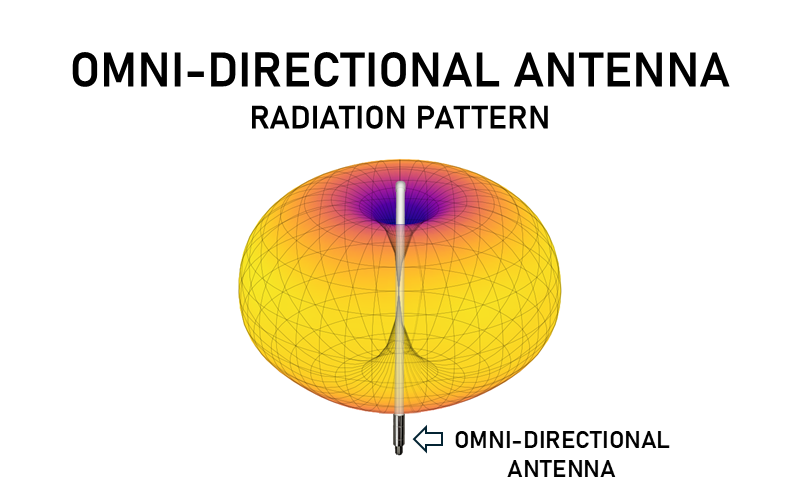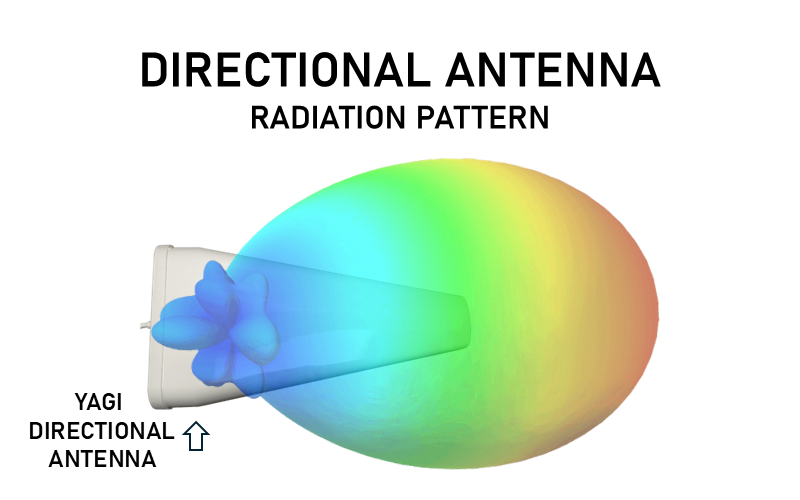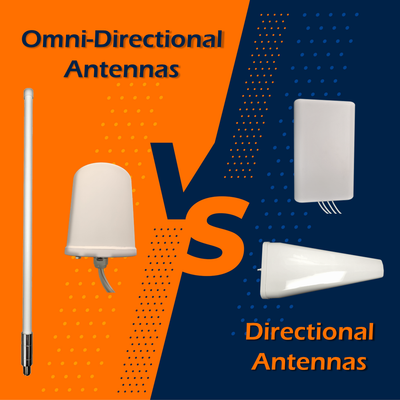Back to the Basics: Omni-Directional vs. Directional Antennas
Posted by Gordon Reed on 28th Oct 2025
Understanding antenna behavior is essential for building a reliable wireless network. Whether you are deploying a mobile hotspot, connecting IoT sensors, or extending Wi-Fi coverage, knowing how an antenna radiates makes all the difference. This post, part of AntennaGear’s “Back to the Basics” series, breaks down the difference between omni-directional and directional antennas. These two fundamental designs define how your signal travels and how efficiently your devices stay connected.
Visualizing the Difference: Understanding Radiation Patterns
Every antenna has a radiation pattern, a visualization of how it distributes energy in space. Think of it as the “shape” of your coverage area.
Key concepts include:
- Gain: A measure of how efficiently an antenna directs RF energy compared to an isotropic radiator.
- Beamwidth: The angular spread of the main lobe where most energy is radiated.
- Azimuth and Elevation Patterns: Cross-sections of coverage in the horizontal and vertical planes.
An antenna’s geometry and internal structure determine these characteristics, ultimately defining its performance and ideal applications.
What Is an Omni-Directional Antenna?
An omni-directional antenna radiates RF energy evenly in a 360° horizontal pattern, resembling a “doughnut” shape around the antenna, known as a toroid. These are the most common antennas used in everyday devices such as Wi-Fi routers, mobile hotspots, and M2M gateways.

Typical Applications
- Environments where devices move frequently or connect from multiple directions.
- Indoor enterprise networks, outdoor parks, and general coverage zones.
- Public safety or mobility deployments where coverage consistency is vital.
Advantages
- Provides uniform coverage in all directions.
- Simple installation and no alignment required.
- Ideal for mobile or variable device positioning.
Considerations
- Lower gain due to energy being spread evenly.
- More prone to interference in dense RF environments.
- Not ideal for long-distance or focused communication paths.
What Is a Directional Antenna?
A directional antenna focuses RF energy into a specific direction, increasing gain and extending range. This design is used when a concentrated signal path is needed, such as between fixed locations or across long distances.

Common Examples
Yagi antennas, flat panel antennas, and parabolic dishes.
Typical Applications
- Point-to-point and point-to-multipoint wireless links.
- Rural broadband or industrial backhaul systems.
- Surveillance, fixed IoT networks, or remote monitoring sites.
Advantages
- Higher gain and extended range.
- Improved signal-to-noise ratio (SNR).
- Reduced interference from unwanted directions.
Considerations
- Requires precise alignment to target the desired area.
- Narrower beamwidth limits coverage outside the main lobe.
- Best suited for fixed or semi-permanent installations.
Comparing Omni-Directional and Directional Antennas
|
Feature |
Omni-Directional |
Directional |
|
Coverage Pattern |
360° horizontal |
Focused, narrow beam |
|
Typical Gain |
2–9 dBi |
8–24+ dBi |
|
Installation Complexity |
Simple |
Requires alignment |
|
Ideal Use Case |
Mobility, general coverage |
Long-distance, point-to-point |
|
Interference Resistance |
Moderate |
High (directional isolation) |
Each design serves a distinct purpose. Omni antennas excel when coverage uniformity is needed, while directional antennas deliver superior performance where precision and range are priorities.
Real-World Application Examples
LTE / Cellular
- Omni: Used with mobile routers or failover gateways to provide consistent connectivity across changing locations.
- Directional: Paired with fixed LTE or 5G installations to target the nearest tower and maximize signal strength.
Wi-Fi
- Omni: Common in indoor access points for even coverage across rooms or open areas.
- Directional: Utilized for outdoor campus Wi-Fi, bridging buildings or specific zones.
IoT / IIoT
- Omni: Supports broad area connectivity for dispersed sensors and devices.
- Directional: Optimized for focused, high-gain communication links between clustered endpoints or base stations.
Selecting the Right Antenna for Your Application
Choosing between omni-directional and directional antennas depends on your deployment environment and performance goals. Consider these key factors:
- Mobility: Moving devices benefit from omni-directional coverage.
- Distance: Longer links require directional antennas.
- Interference: Directional antennas help isolate signals.
- Installation: Omni antennas are plug-and-play, while directional units need alignment.
AntennaGear offers a complete range of both omni-directional and directional antennas engineered for LTE, 5G, Wi-Fi, and IoT devices. Our selection tools and compatibility guides make it simple to match the right antenna to your router or gateway.
What This Means for You
Understanding the difference between omni-directional and directional antennas ensures your network performs at its best. The right antenna choice leads to stronger signals, fewer drops, and more efficient coverage.
Explore AntennaGear.net for expert resources and engineered antenna solutions designed to keep your devices connected wherever your network needs to perform.

